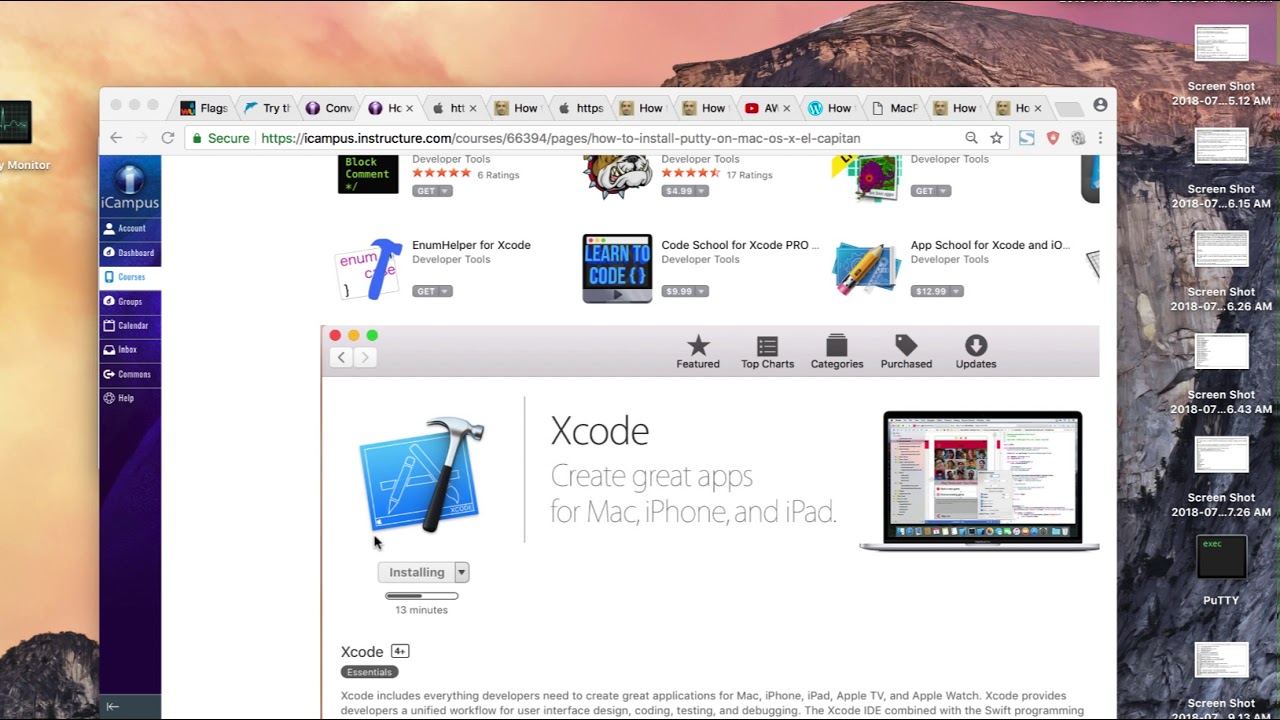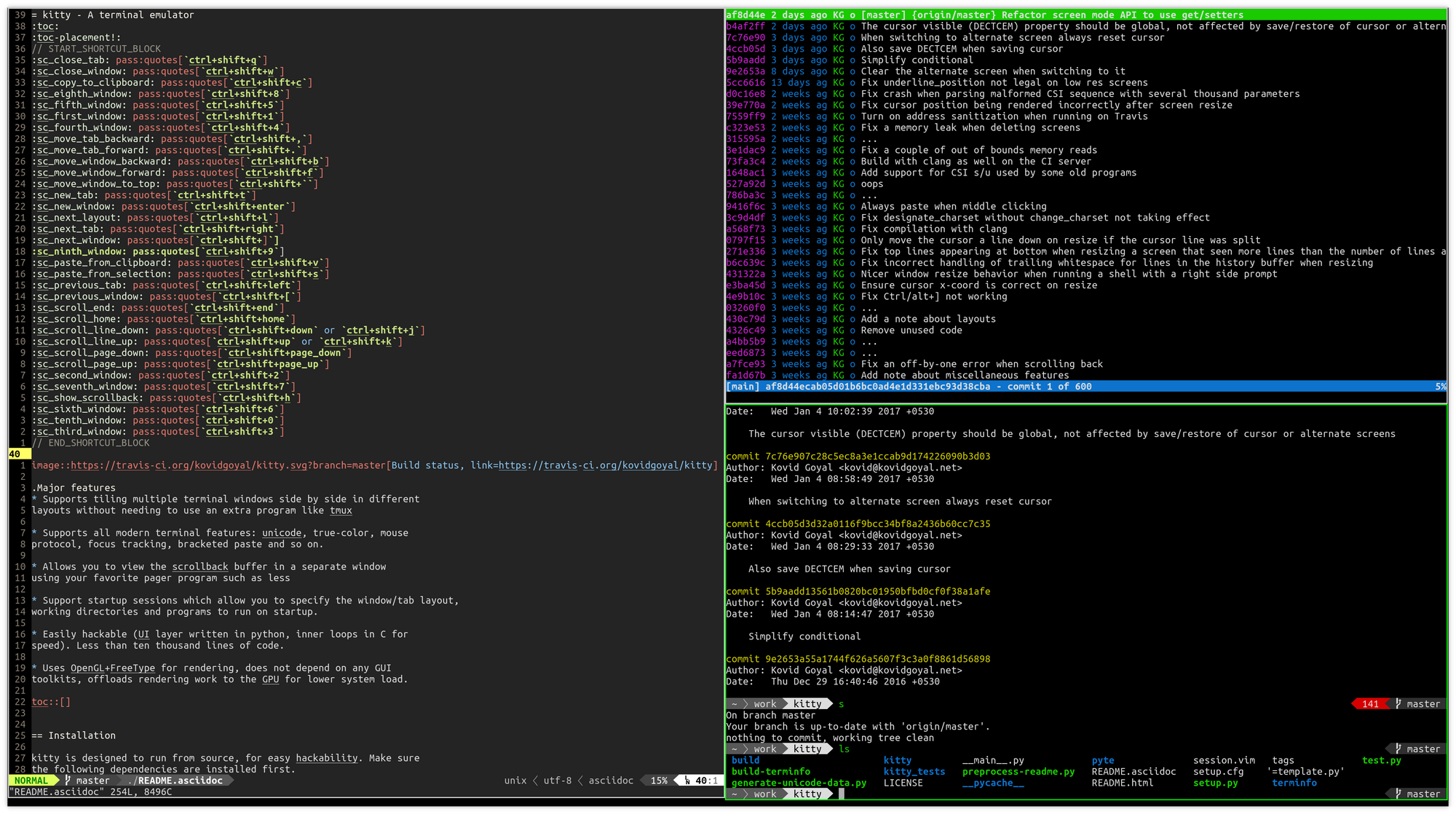

- #Putty for mac os build install#
- #Putty for mac os build full#
- #Putty for mac os build password#
- #Putty for mac os build download#
- #Putty for mac os build windows#
You may see the Load SSH Key? dialog after installation.
#Putty for mac os build install#
Refer to the Install Sourcetree page for more details.
#Putty for mac os build download#
If you don't yet have Sourcetree, go to and click the Download free button.Ĭlick the. Install Sourcetree and add your Bitbucket account

You may want to create an SSH directory when you do, so that you can refer to your SSH keys whenever you need them. Use this section to generate an SSH key using Sourcetree. When you create an SSH key with Sourcetree, you can save the public and private key wherever you want locally. To change the key's contents, you need to delete and re-add the key. Return to the terminal window and verify your configuration and username by entering the following command:Īfter you add a key, you can edit the key's Label but not the key itself. It doesn't matter whether or not you include the email address in the Key. You may see an email address on the last line when you paste. Select the contents of the file (just avoid selecting the end-of-file characters).

If you have problems with copy and paste, you can open the file directly with Notepad. Select and copy the key output in the clipboard. On macOS, the following command copies the output to the clipboard: If you renamed the key, replace id_rsa.pub with the public key file name. In your terminal window, copy the contents of your public key file. If you've already added keys, you'll see them on this page.
#Putty for mac os build password#
(macOS only) So that your computer remembers your password each time it restarts, open (or create) the ~/.ssh/config file and add these lines to the file: List the contents of ~/.ssh to view the key files. Your identification has been saved in /Users/emmap1/.ssh/id_rsa. The whole interaction will look similar to the following:Įnter file in which to save the key (/Users/emmap1/.ssh/id_rsa): The command creates your default identity with its public and private keys. For example, to create a key called my-new-ssh-key, enter a path like the one shown at the prompt:Įnter file in which to save the key (/Users/emmap1/.ssh/id_rsa): /Users/emmap1/.ssh/my-new-ssh-key
#Putty for mac os build full#
To create a key with a name or path other than the default, specify the full path to the key. We recommend you keep the default key name unless you have a reason to change it. $ ssh -T command message tells you which of your Bitbucket accounts can log in with that key. Return to the command line and verify your configuration and username by entering the following command: Paste the copied public key into the SSH Key field.īitbucket sends you an email to confirm the addition of the key. It doesn't matter whether or not you include the email address.Įnter a Label for your new key, for example, Default public key. You may see an email address on the last line. ssh/id_rsa.pub file (or whatever you named the public key file) and copy its contents. Add the public key to your Account settingsįrom Bitbucket, choose Personal settings from your avatar in the lower left.Ĭlick SSH keys. If you don't want to type your password each time you use the key, you'll need to add it to the ssh-agent.Įnter ssh-add followed by the path to the private key file: The command displays two files, one for the public key (for example id_rsa.pub) and one for the private key (for example, id_rsa). You should see something like the following: Your public key has been saved in /c/Users/emmap1/.ssh/id_rsa.pub. Your identification has been saved in /c/Users/emmap1/.ssh/id_rsa. The whole interaction looks similar to this:Įnter file in which to save the key (/c/Users/emmap1/.ssh/id_rsa):Ĭreated directory '/c/Users/emmap1/.ssh'.Įnter passphrase (empty for no passphrase): Enter and re-enter a passphrase when prompted.
#Putty for mac os build windows#
For example, to create a key called my-new-ssh-key, enter the Windows path, shown here:Įnter file in which to save the key (/c/Users/emmap1/.ssh/id_rsa): c:\Users\emmap1\.ssh\my-new-ssh-keyģ. To create a key with a non-default name or path, specify the full path to the key.

We recommend keeping the default key name unless you have a reason to change it.


 0 kommentar(er)
0 kommentar(er)
